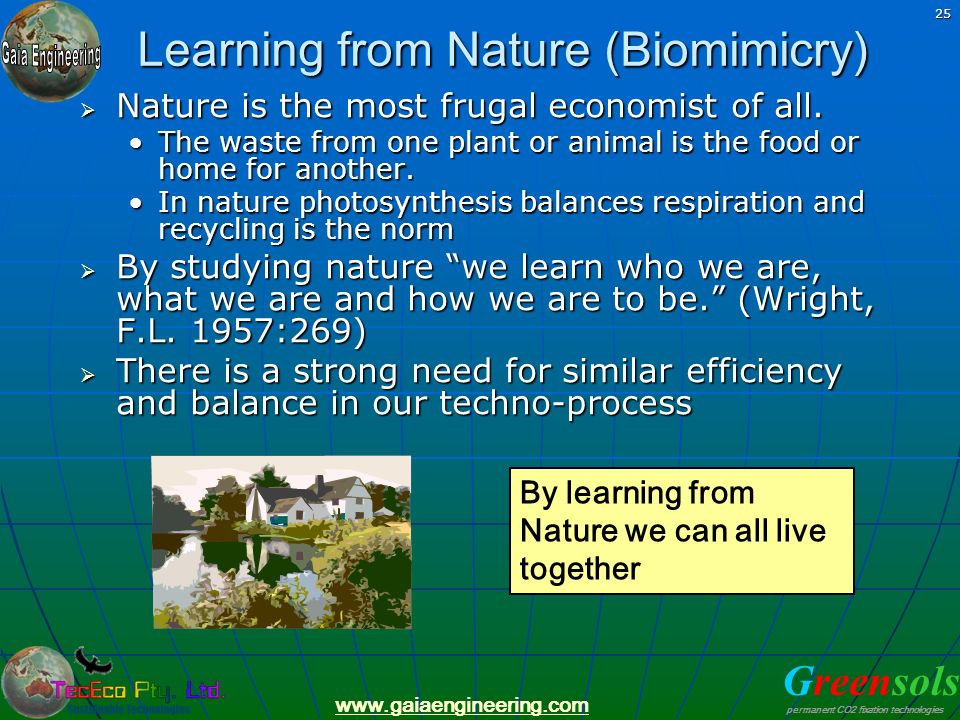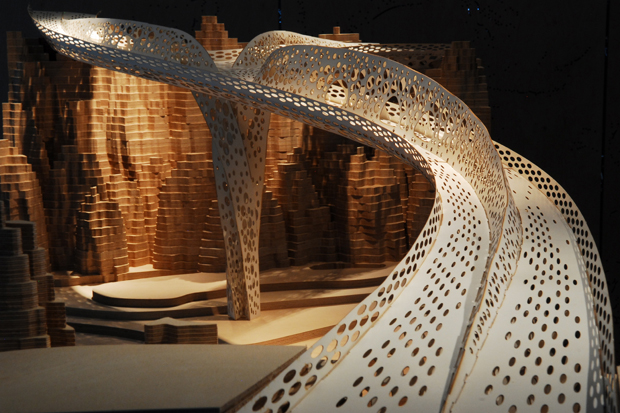Biomimicry: Mother Nature’s Guide to a Better and more Harmonious World

Learning fromNature

“With the onward march of science and technology, and the continuing quest for improvement, there is a growing curiosity about the world around us. The structures in nature are great lessons for human study. Only the most successful structural forms have survived. The resourcefulness of material use, conformity with mathematical proportion, underlying structural systems, and the profound capacity to respond to a variety of climatic and environmental forces, make natural forms tremendous exemplars to numerous aspects of our life. Close examination of structures in nature can be rewarding and surprising. “Doing it nature's way”, as shown below, has the potential to change the way we live for the better.
Biomimicry (from bios, meaning “life,” and mimesis, meaning “to imitate”) is a design principle that seeks sustainable solutions to human problems by consulting and emulating nature’s time- honoured patterns and strategies. According to Janine Benyus (2002), author of the ground breaking book Biomimicry, the core idea is that nature, imaginative by necessity, has already solved many of the problems we are grappling with. Using nature’s principles allow us to create products, processes, and policies that are well- adapted to life on Earth over the long haul.

'BT took inspiration from the behaviour of ants when it redesigned its phone network.'.
Photo:theguardian.com
The science of biomimicry provides us with a framework. In her book, Benyus offers the following nine basic laws of the circle of life, all of which resonate throughout her work and that of other biomimics:
• Nature runs on sunlight
• Nature uses only the energy it needs
• Nature fits form to function
• Nature recycles everything
• Nature rewards cooperation
• Nature banks on diversity
• Nature demands local expertise
• Nature curbs excesses from within
• Nature taps the power of limits”

Shi Ling Bridge:Biomimicry in architecture and the start of the Ecological Age
Photo: wired.co.uk
‘Animals, plants and microbes are eternal engineers, possessing a power of innovation that humanity can merely watch in awe. They are in a constant flux of change, adapting and evolving to fit with the ever-changing world around them. With climate change now an accepted trend and scarcity of crucial resources becoming increasingly prevalent, what can business learn from this constant cycle of natural innovation?
Biomimicry is a new science that aims to use nature's best ideas and adapt them for human use. The environment has developed many of the world's most phenomenal masterpieces such as photosynthesis, self-sustaining eco-systems and natural selection, so how can humans copy these designs and manufacturing systems to solve some of today's biggest challenges?
Biomimicry looks at nature in three different ways:
• Nature as a model: Biomimicry uses the forms, processes, systems, and strategies employed by the natural world as inspiration for sustainable solutions.
• Nature as a measure: Looking at the standards set by nature, biomimicry aims to measure the sustainability of inventions using ecology as a benchmark.
• Nature as a mentor: The focus of biomimicry is not what we can extract from nature but what we can learn from it.’

“Mimesis within the context of its original Greek meaning requires the imitator to embody that which is being imitated. This goes to the heart of what makes us human: through perception, imagination and empathetic identification, we can share in what another feels and in doing so transform what we perceive into what we experience. It's wisdom sourced from our ability to love.
It is true that our analytical examination of nature is important, but only as part of a deeper, richer participatory engagement. If the deeper resonance of our nature is overlooked, such biomimetic transformations fail to address the root cause of our unsustainable way of life. We deal with symptoms (carbon emissions, waste to landfill, ocean dead zones, social inequality, factory farming) while neglecting the underlying cause (attuning our self-other-nature relationship).
Put more bluntly, scientific rationalism will not get us out of this mess on its own; in fact, it will only add to our dysfunctional way of living unless it goes hand-in-hand with a deeper participatory way of engaging with life: scientific, sensuous and spiritual.”
The above excerpts are from the following original articles:
Live discussion: What is Biomimicry? | Guardian Sustainable Business | theguardian.com
